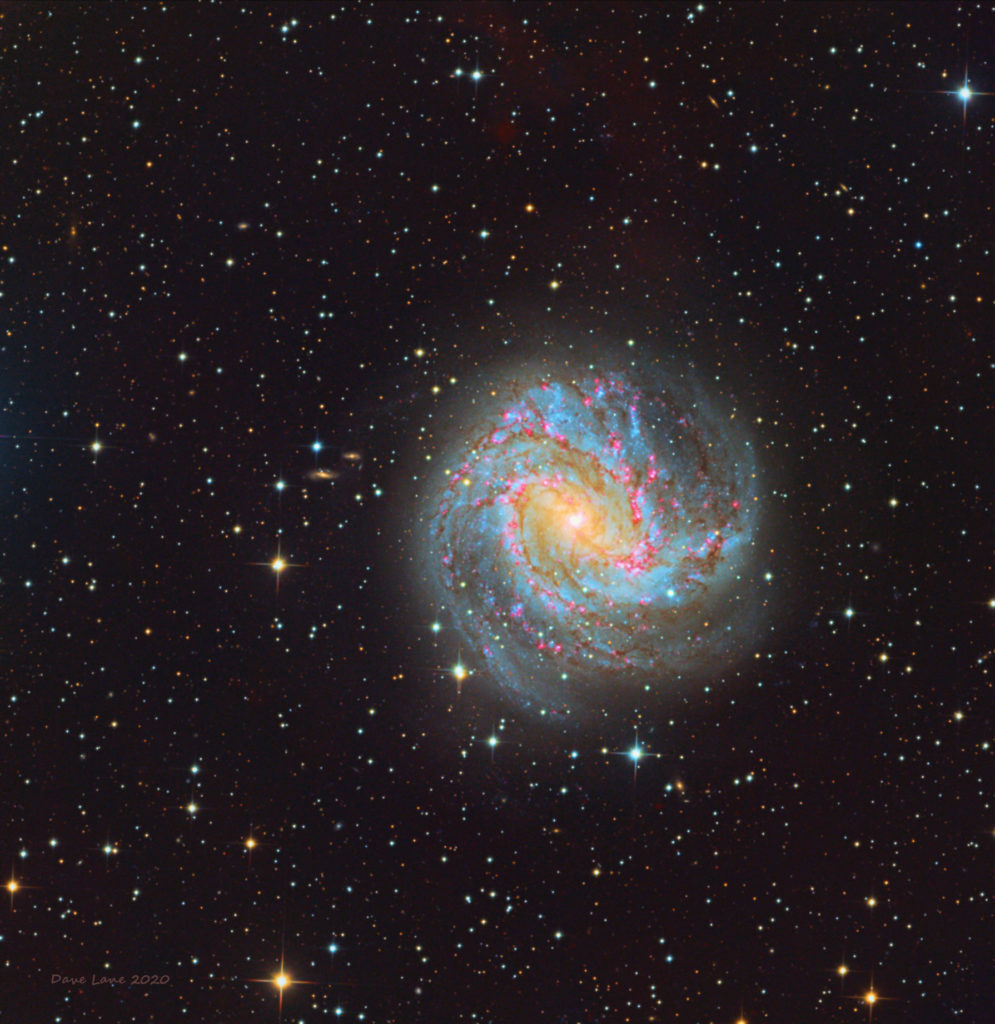Sky Report June 8 – June 14

This week three planets are visible, all in the morning sky. The best time to look is in the hour or so before dawn, and then you’ll see, from west to east, Jupiter, Saturn, and Mars. They are all low in the south and southeast where they’re less than a third of the way up the sky.
Brightest of the three is Jupiter, the “king planet”. It’s significantly brighter than any star, so you can’t miss it. If you have a small telescope you can watch Jupiter’s four moons change their positions as they orbit around it.
Saturn is immediately to the left of Jupiter, and although it’s only 1/15 as bright as Jupiter, Saturn is still as bright as the brightest stars. These two planets are 5° apart – about the width of two fingers held at arm’s length – and they’ll remain within about 8° from each other for the rest of the year.
With even a small telescope at 30 power or greater you’ll see the famous rings of Saturn and one dim moon; a larger telescope reveals several more moons.
Mars is well to the left of its larger siblings, and at 5 a.m. it’s in the southeast. Mars too is as bright as the brightest stars so it too is unmistakable.
On the mornings of the 11th through 14th the faint planet Neptune is less than 2° above Mars, and if you have both a telescope and a finding chart you can easily locate this distant planet. You can print a finding chart at https://theskylive.com/neptune-info; follow the directions.
The moon passes these planets this week. On the morning of Tuesday the 9th it makes a shallow triangle with Jupiter and Saturn, and on the morning of Friday the 12th and Saturday 13th it’s near Mars. The moon is at its third-quarter phase on the 13th, when it has completed three-quarters of its monthly journey around the earth.
At 5 a.m. the bright star that is nearly overhead is Deneb in Cygnus, the Swan. Deneb is noted for its distance – it’s by far the most distant bright star you can see. Its distance isn’t known accurately, but the most often cited figure is 2,600 light years, or 15,000,000,000,000,000 (15 quintillion) miles. To appear so bright from such a vast distance it must be truly luminous, and it’s estimated to be about 100,000 times as bright as our sun.
The Sky Report is presented as a public service by the Stellar Vista Observatory, a nonprofit organization based in Kanab, Utah, which provides opportunities for people to observe, appreciate, and comprehend our starry night sky. Additional information is at www.stellarvistaobservatory.org. Send questions and comments to John@StargazingAdventures.org.






Comments are closed.